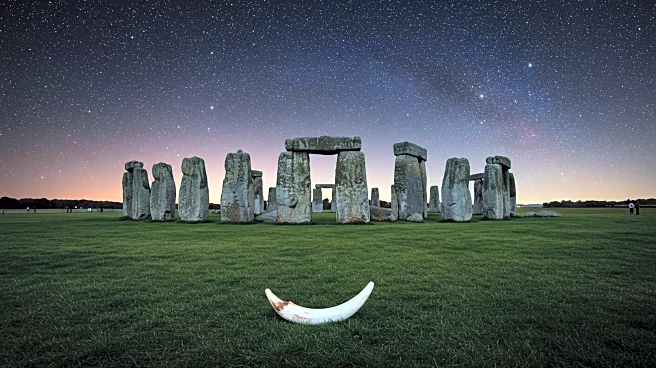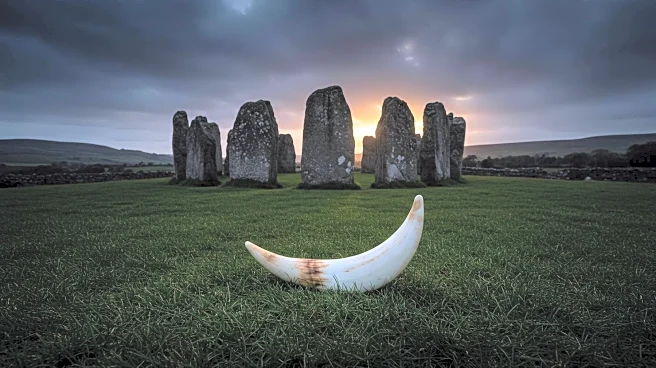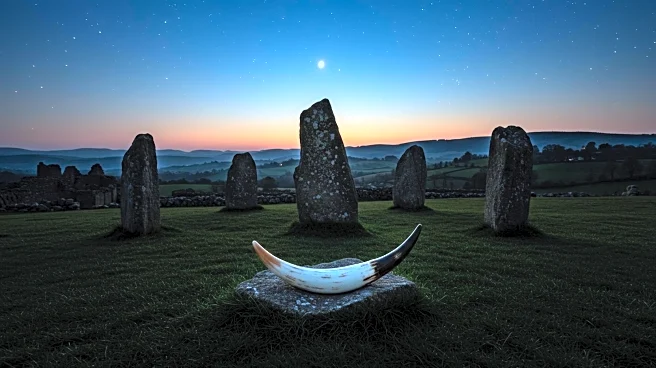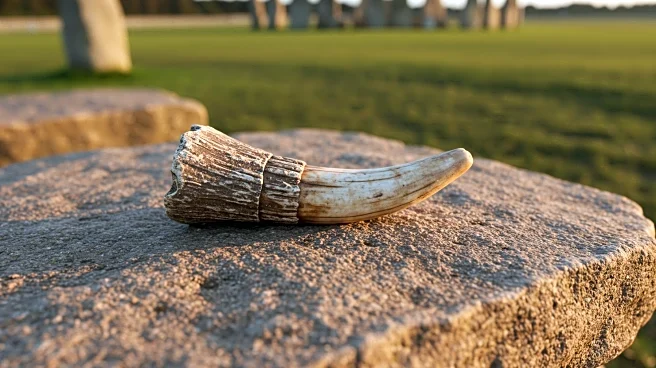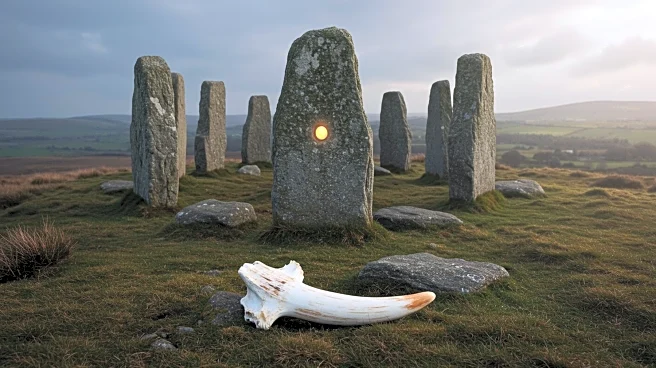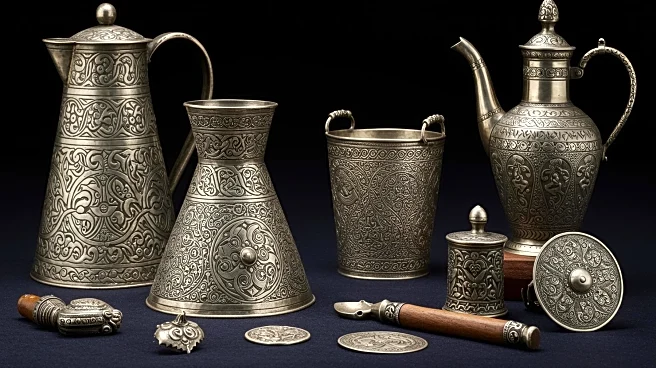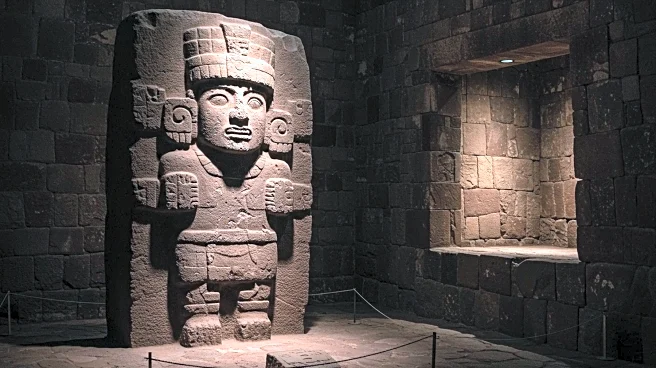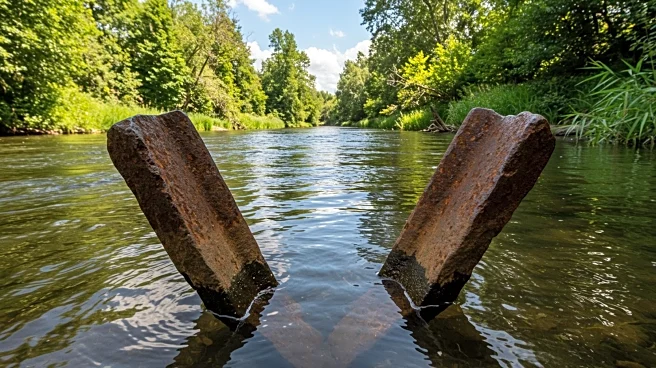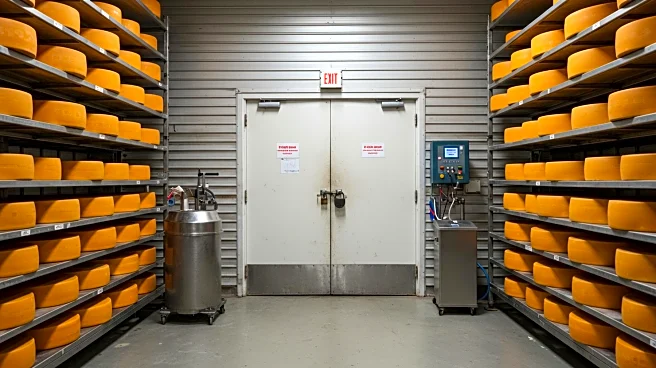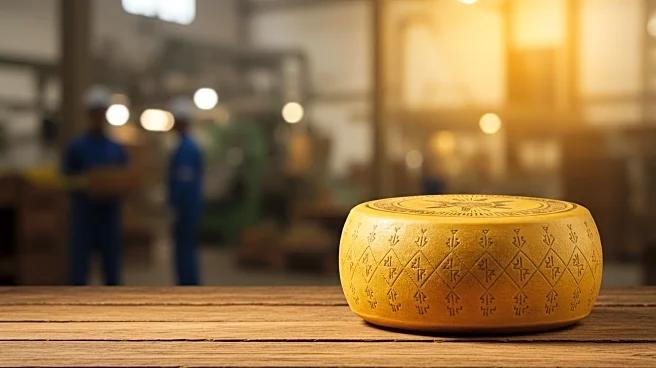Rapid Read • 7 min read
Recent research has provided new insights into the construction of Stonehenge, suggesting that cows or oxen may have played a role in transporting the massive stones from Wales to Salisbury Plain. A cow's tooth, discovered near Stonehenge's south entrance in 1924, has been analyzed by scientists from the British Geological Society, Cardiff University, and University College London. The analysis indicates that the cow originated from an area with Palaeozoic rocks, similar to the bluestones found in Wales. This supports the theory that cattle could have been used to move the stones, offering a new perspective on the ancient monument's construction.
AD
The findings provide a fresh understanding of the logistical challenges faced by the builders of Stonehenge. The use of cattle for transporting stones highlights the ingenuity and resourcefulness of ancient societies in overcoming geographical and technological limitations. This discovery also emphasizes the interconnectedness of different regions in prehistoric Britain, as it suggests a link between Stonehenge and Wales. The research contributes to the broader narrative of human innovation and adaptation in the face of monumental construction projects.
The study of the cow's tooth offers a detailed biographical approach to understanding Stonehenge, moving beyond grand narratives to focus on individual elements of the site's history. This method provides a more nuanced view of the past, revealing the complex interactions between humans, animals, and the environment. The research also underscores the importance of interdisciplinary collaboration in archaeology, combining geological, isotopic, and historical analyses to uncover new facets of ancient history.
AD
More Stories You Might Enjoy
